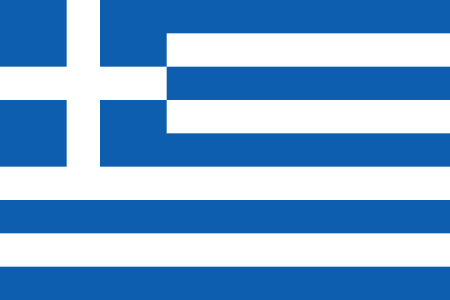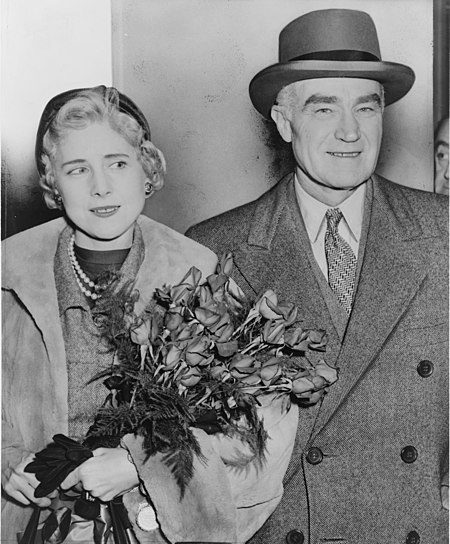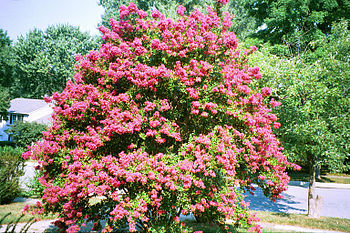Emilia Pardo Bazán
| |||||||||||||||||||||||||
Read other articles:

Historic republic on the British Isles (1649–1660) Not to be confused with the Commonwealth of Nations. Commonwealth of England1649–1660One of the various flags of the CommonwealthIncludingThird English Civil WarBritish InterregnumThe Protectorate (1653–1659)Leader(s)Oliver Cromwell (1653–1658)Richard Cromwell (1658–1659)Chronology Second English Civil War Stuart Restoration (1660) The Commonwealth was the political structure during the period from 1649 to 1660 when England and Wales, …

British Liberal Democrat politician The Right HonourableThe Baroness Bonham-Carterof YarnburyMember of the House of LordsLord TemporalIncumbentAssumed office 21 July 2004Life Peerage Personal detailsBorn (1957-10-20) 20 October 1957 (age 66)Political partyLiberal DemocratDomestic partnerTim Razzall[1]Alma materUniversity College London Jane Bonham Carter, Baroness Bonham-Carter of Yarnbury (born 20 October 1957) is a British Liberal Democrat politician,[2] and member of …

Sociology, social psychology experiment definition In the fields of sociology and social psychology, a breaching experiment is an experiment that seeks to examine people's reactions to violations of commonly accepted social rules or norms. Breaching experiments are most commonly associated with ethnomethodology, and in particular the work of Harold Garfinkel. Breaching experiments involve the conscious exhibition of unexpected behavior/violation of social norms, an observation of the types of so…

Liga Arab memiliki 22 negara anggota. Liga Arab didirikan di Kairo pada tahun 1945 oleh Mesir, Irak, Lebanon, Arab Saudi, Suriah, Yordania, dan Yaman (Yaman Utara, kemudian disatukan dibawah negara Yaman). Ada peningkatan jumlah keanggotaan selama paruh kedua abad ke-20, dengan tambahan 15 negara Arab dan 4 pengamat. Israel tidak termasuk dalam keanggotaan meskipun 20 % dari penduduknya terdiri dari Arab Palestina, hampir setengah penduduk Yahudi juga diturunkan dari orang Yahudi dari negar…

This article is about the town in Washington County. For the former plantation in Arlington County, see Abingdon (plantation). Town in Virginia, United StatesAbingdonTownAbingdon Welcome Sign FlagSealLogoMotto(s): Honor Pro Antiquis, Fides Pro FuturisLocation in VirginiaAbingdonLocation in VirginiaShow map of VirginiaAbingdonLocation in the United StatesShow map of the United StatesAbingdonAbingdon (North America)Show map of North AmericaCoordinates: 36°42′35″N 81°58′32″W …

1980 single by Dexys Midnight RunnersGenoSingle by Dexys Midnight Runnersfrom the album Searching for the Young Soul Rebels B-sideBreakin' Down the Walls of HeartacheReleased14 March 1980Recorded1979Genre Blue-eyed soul new wave R&B[1] Length3:31LabelLate Night Feelings/EMISongwriter(s)Kevin Archer, Kevin RowlandProducer(s)Pete WingfieldDexys Midnight Runners singles chronology Dance Stance (1979) Geno (1980) There, There, My Dear (1980) Geno is a 1980 single by Dexys Midnight Runner…

سيساميا تقسيم إداري البلد اليونان [1] إحداثيات 40°57′29″N 23°25′29″E / 40.958055555556°N 23.424722222222°E / 40.958055555556; 23.424722222222 السكان التعداد السكاني 330 (resident population of Greece) (2021)493 (resident population of Greece) (2001)487 (resident population of Greece) (1991)329 (resident population of Greece) (2011) الرمز الجغرافي 734270 تع�…

Henry Luce con la moglie Clare Boothe Luce nel 1954 Henry Robinson Luce (Penglai, 3 aprile 1898 – Phoenix, 28 febbraio 1967) è stato un giornalista e editore statunitense, creatore del giornalismo illustrato moderno[1]. Indice 1 Biografia 1.1 Riviste 2 Note 3 Bibliografia inglese 4 Altri progetti 5 Collegamenti esterni Biografia Luce nacque a Penglai, Cina, il 3 aprile 1898, figlio di Elizabeth Middleton e Henry Winters Luce, un missionario presbiteriano.[2] Studiò cinese e i…

مسجد الحاج نعمان الباجه جي معلومات عامة القرية أو المدينة بغداد / الرصافة الدولة العراق تاريخ بدء البناء 1235هـ/ 1819م المواصفات المساحة 700م2 عدد المصلين 50 التفاصيل التقنية المواد المستخدمة الطابوق التصميم والإنشاء النمط المعماري إسلامية قديمة تعديل مصدري - تعديل مسجد الحاج…

Ini adalah nama Maluku, Ambon marganya adalah Sihasale Ari SihasaleLahirJuharson Estrella Sihasale5 Oktober 1973 (umur 50)Tembagapura, Papua, IndonesiaNama lainAri SihasalePekerjaanAktormodelpenyanyiprodusersutradaraTahun aktif1990—sekarangSuami/istriNia Zulkarnaen (m. 2003)Anak2 (adopsi)Keluarga Dicky Zulkarnaen (mertua) Mieke Wijaya (mertua) Karier musikGenrePopInstrumen Vokal LabelSony Music Entertainment IndonesiaArtis terkaitAri WibowoSurya Sa…

ICQTipePengirim pesan instan, layanan jejaring sosial, aplikasi seluler dan komunitas daring Versi pertama15 November 1996 Versi stabil 10.0.16100 (21 Februari 2022) GenreKlien Pengirim pesan instanLisensiAdwareBahasabanyak bahasa Karakteristik teknisSistem operasiMicrosoft Windows, macOS, Linux, iOS, Android, Windows Phone dan Symbian OS Formatunduhan digital Bahasa pemrogramanC++ Informasi pengembangPengembangMirabilis, AOLPenerbitGoogle Play dan App Store Sumber kode Kode sumberPranala Snappy…

Australian architect Walter BunningWalter Bunning architect, Australia, 1946Born(1912-05-19)19 May 1912South Brisbane, QueenslandDied13 October 1977(1977-10-13) (aged 65)SydneyNationalityAustralianOccupationArchitectAwardsRIBA Bronze Medal: Anzac House (1957)Sir John Sulman Medal: Liner House (1962)PracticeCarlyle GreenwellStephenson & MeldrumH. Ruskin RoweBunning and MaddenBuildingsBunning House, Ryrie Street, Mosman (1952)Liner House (1960)Bruce Hall, Australian National University (1…

Pour les articles homonymes, voir Aide et Assistance. Dans ce schéma, le joueur bleu sur la droite est crédité d'une aide, tandis que le joueur bleu sur la gauche est crédité du but. Au hockey sur glace, lorsqu'une équipe inscrit un but, une aide (aussi appelée assistance ou passe) est attribuée aux deux joueurs précédents qui ont touché (ou dévié) le palet (rondelle) vers le buteur. Généralités Il ne peut pas y avoir plus de deux aides par but[1],[2] : la première aide est…

The Eastern Orthodox cross June 9 - Eastern Orthodox Church calendar - June 11 All fixed commemorations below celebrated on June 23 by Orthodox Churches on the Old Calendar.[note 1] For June 10th, Orthodox Churches on the Old Calendar commemorate the Saints listed on May 28. Saints Martyrs Alexander and Antonina, at Crodamon (c. 313)[1][2][3][4] (see also May 3) Martyr Neaniscus the Wise of Alexandria.[3][5][6][7] Hieromarty…

Japanese company in colonial Korea West Chōsen Central RailwayOverviewNative name서선중앙철도 (Seoseon Jung'ang Cheoldo)西鮮中央鉄道 (Sōsen Chūō Tetsudō) Route map Legend Sentetsu lines transferred to Sentetsu 1 April 1944 West Chosen Central Railway Seoseon Line West Chosen Central Railway Jaedong Line West Chosen Central Railway Deokbal Line Pyeongyang Colliery Line (Sentetsu) 0.0 Seunghori 4.2 Mandalli 8.0 Hwacheon 12.7 Geumok 15.9 Songga 22.3 Samdeung 25.7 He…

Lukisan dari tahun 1887 yang menggambarkan seorang anak yang diajarkan mengenai provinsi Alsace-Lorraine yang lepas setelah Perang Prancis-Prusia. Revanchisme (dari kata dalam bahasa Prancis, bahasa Prancis: revanche, yang berarti balas dendam) adalah istilah yang digunakan semenjak tahun 1870-an untuk mendeskripsikan manifestasi politik dari kehendak untuk mengembalikan wilayah yang direbut oleh negara lain, yang sering kali memicu perang atau pergerakan sosial. Kekuatan pergerakan revanchi…

British television series CelebAirGenreReality televisionPresented byAngellica BellNarrated byTed MayOpening themeGetting BetterEnding themeGetting BetterComposerShed SevenCountry of originUnited KingdomOriginal languageEnglishNo. of series1No. of episodes8ProductionProduction locationsLondon Gatwick AirportManchester AirportRunning time60 mins (inc. breaks)Production companiesZeppotronInitialOriginal releaseNetworkITV2Release2 September (2008-09-02) –23 October 2008 (2008-10-23…

Chiesa della Natività di Nostro Signore Gesù CristoAbbazia di Villa OnetoStato Italia RegioneLiguria LocalitàVilla Oneto (San Colombano Certenoli) Coordinate44°21′24″N 9°17′20″E44°21′24″N, 9°17′20″E Religionecattolica di rito romano Titolarenascita di Gesù Diocesi Chiavari Modifica dati su Wikidata · Manuale La chiesa della Natività di Nostro Signore Gesù Cristo - denominata anche come abbazia di Villa Oneto - è stato un luogo di culto cattolico situato nell…

Genus of trees For other plants called myrtle, see List of plants known as myrtle. Crape myrtle Lagerstroemia indica Scientific classification Kingdom: Plantae Clade: Tracheophytes Clade: Angiosperms Clade: Eudicots Clade: Rosids Order: Myrtales Family: Lythraceae Subfamily: Lythroideae Genus: LagerstroemiaLinnaeus Species See text Lagerstroemia (/ˌleɪɡərˈstriːmiə/),[1] commonly known as crape myrtle[2][3] (also spelled crepe myrtle or crêpe myrtle), is a genus of…

Voce principale: 1. Fußball- und Sportverein Mainz 05. 1. Fußball- und Sportverein Mainz 05Stagione 2019-2020Sport calcio Squadra Magonza Allenatore Sandro Schwarz (1ª-11ª) Achim Beierlorzer (12ª-34ª) All. in seconda Niko Bungert Michael Falkenmayer Jan-Moritz Lichte Michael Thurk Bundesliga13º posto Coppa di GermaniaPrimo turno Maggiori presenzeCampionato: Niakhaté (33)Totale: Niakhaté (34) Miglior marcatoreCampionato: Quaison (13)Totale: Quaison (13) StadioOpel Arena Maggior nume…
![Portrait by Joaquín Vaamonde Cornide [es] (1896)](http://upload.wikimedia.org/wikipedia/commons/thumb/7/77/Emilia_Pardo_Bazan_%281896%29.jpg/215px-Emilia_Pardo_Bazan_%281896%29.jpg)


